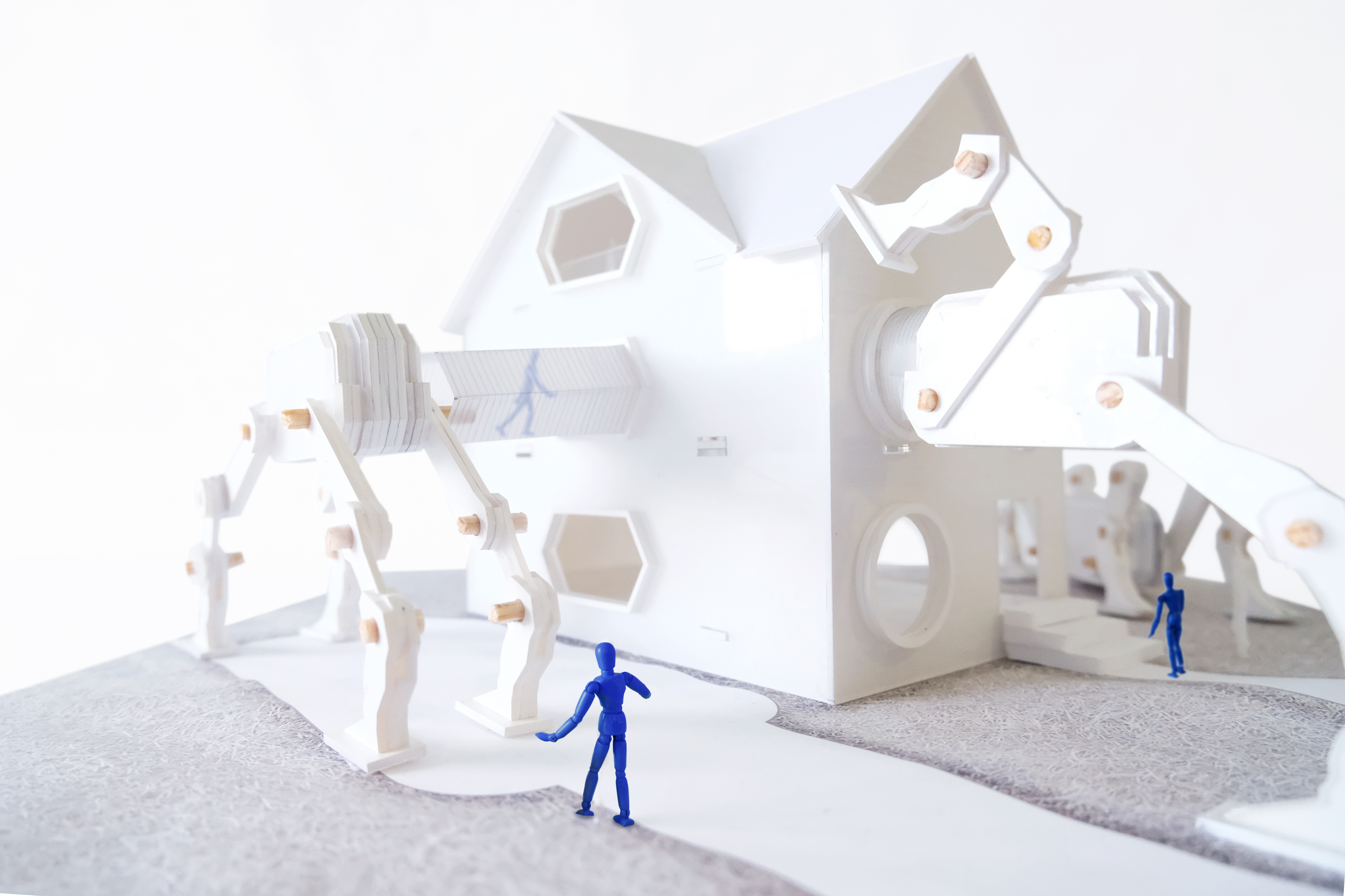How can design
Translate Embodiments
into inclusive environments?
—
Translate Embodiments brings together the objectives and methodologies of the Multiply Perspectives, Practice Empathically and Disrupt Standards themes to experiment with alternative design processes. The theme explores methods for interpreting empathic understand of heterogeneous perspectives into supportive architectural environments. Through research and design speculation students explored the question: what new architectures will emerge when we start from non-normative embodiments?
Through the construction of the Action Figures, pairs of students identified specific design subjects. The research exercise Spatial Hybrids challenged students to then analyze and hybridize a pair of precedents and initiate speculation on alternative systems for supporting their unique design subjects. These investigations were furthered through the development of an Adaptive Environment Prototype (A.E.P), an experimental systems for supporting the diverse embodiments that emerge through the process of aging.
Through the construction of the Action Figures, pairs of students identified specific design subjects. The research exercise Spatial Hybrids challenged students to then analyze and hybridize a pair of precedents and initiate speculation on alternative systems for supporting their unique design subjects. These investigations were furthered through the development of an Adaptive Environment Prototype (A.E.P), an experimental systems for supporting the diverse embodiments that emerge through the process of aging.
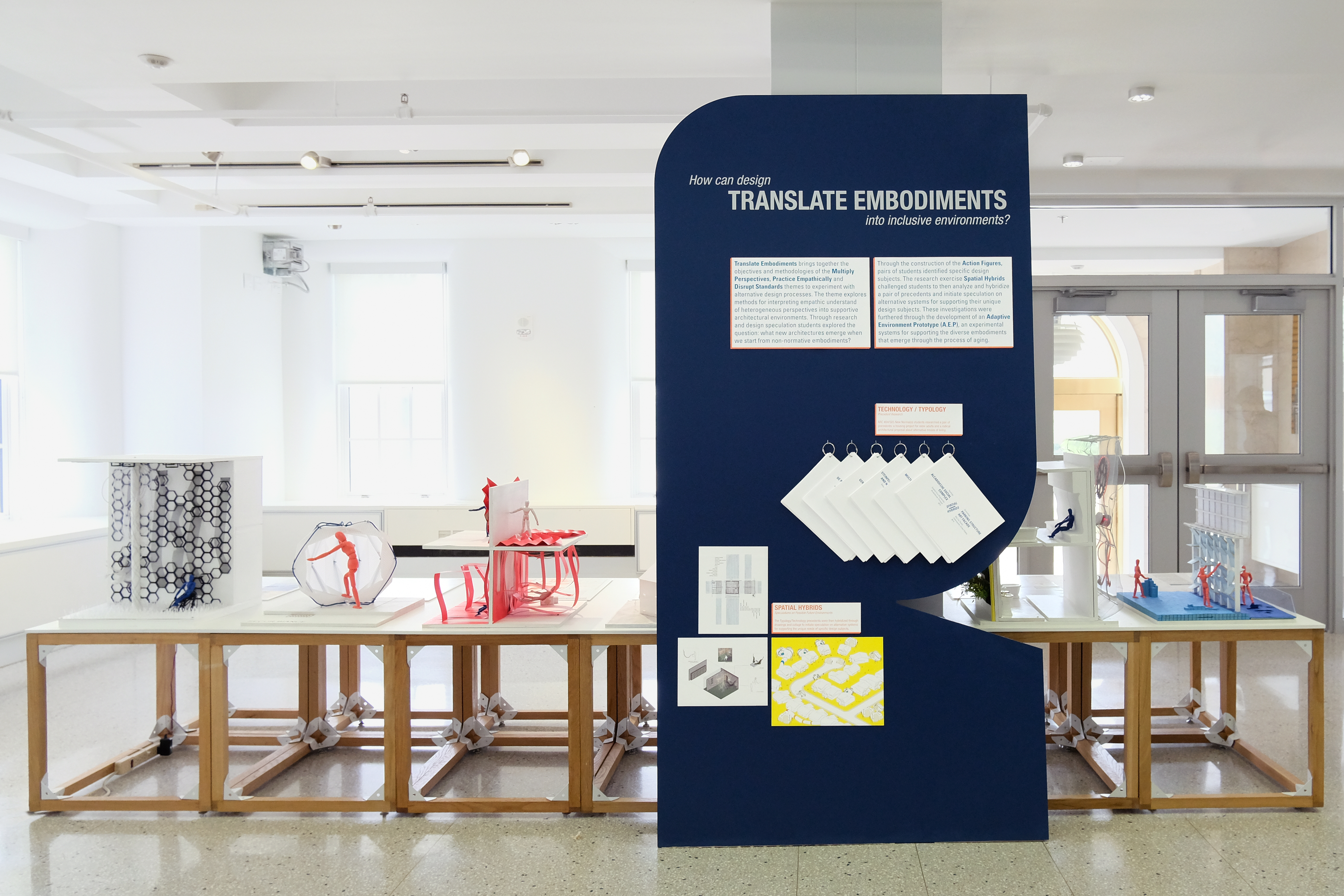
Ex.6 Adaptive Environment Prototype (A.E.P)
Humans of all ages are sites of interdependency, reliant on a network of technologies, environments and other individuals to sustain being. Through the process of aging, the conditions of a person’s interdependency alter, transform and expand along with shifts in their individual embodiment. In response, older adults are readily making and re-making their bodies through physical prosthetics, biological augmentation, and technological systems. Despite the dynamic nature of these bodily assemblages, the environments we design to support older adults are often static, rigid in their desire for security and durability, and even nostalgic for past cultural and spatial conditions.
Through precedent research and design speculations students were challenged to blur the boundaries between building, technology and environment in order to reposition architecture as an adaptive support to the aging body. Within the territory through the Spatial Hybrids project, students developed an Adaptive Environment Prototype (A.E.P) that critically challenges normative design processes and offers dynamic systems for supporting older adults.
Work by ARC 404/505 New Normal(s) seminar students: Alexa Russo, Alexandra Sheehan, Amrutha Boban, Andrea Gonzalez, Arisha Shahid, Emma McAneny, Euychan Jeong, Jarrett Trudeau, Kelsey Habla, Lauren Kennedy, Ruchita Chandsarkar, Ryan Olsen
Through precedent research and design speculations students were challenged to blur the boundaries between building, technology and environment in order to reposition architecture as an adaptive support to the aging body. Within the territory through the Spatial Hybrids project, students developed an Adaptive Environment Prototype (A.E.P) that critically challenges normative design processes and offers dynamic systems for supporting older adults.
Work by ARC 404/505 New Normal(s) seminar students: Alexa Russo, Alexandra Sheehan, Amrutha Boban, Andrea Gonzalez, Arisha Shahid, Emma McAneny, Euychan Jeong, Jarrett Trudeau, Kelsey Habla, Lauren Kennedy, Ruchita Chandsarkar, Ryan Olsen
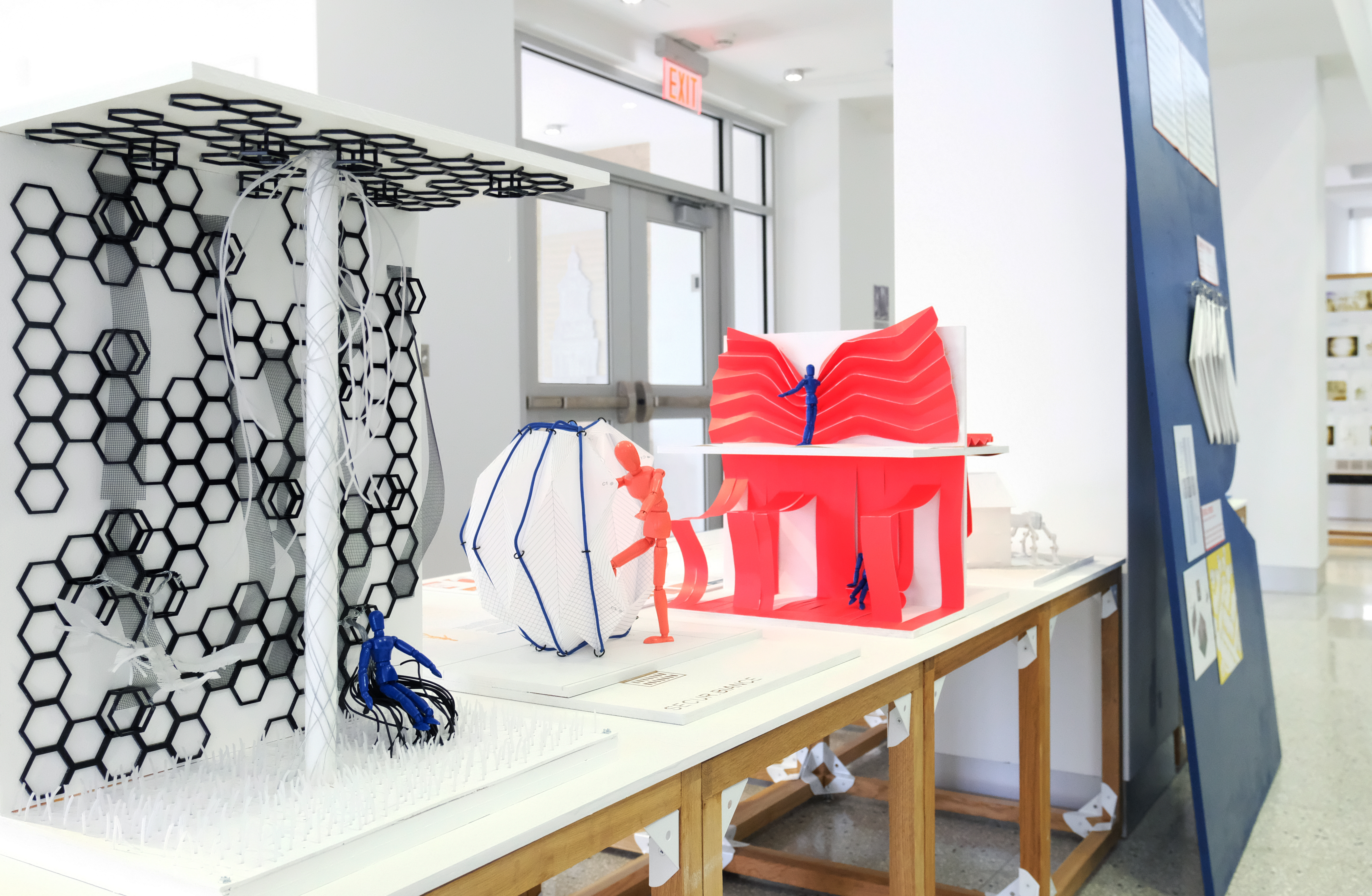
SECUR.BIANCE
Project by Emma McAneny & Lauren Kennedy
SECUR.BIANCE is designed for young-old adults with early onset Alzheimer’s or Dementia. These people are fully capable physically, but suffer from “episodes” of confusion. They may be out and suddenly not remember where they are or what they are doing. These episodes are random and can occur at any time. Over stimulation for the individual can be a serious issue and increase confusion for them.
SECUR.BIANCE is an environment for temporary use which the individual can modify based on physical, emotional or cognitives conditions. It is an adaptive environment that empowers the individual and their family to feel confident about their well being when the user goes out independently.




Stage 1 SECUR.BIANCE in mobile form
Stage 2 Unfold
SECUR.BIANCE
Stage 3 Three stages of unfolding

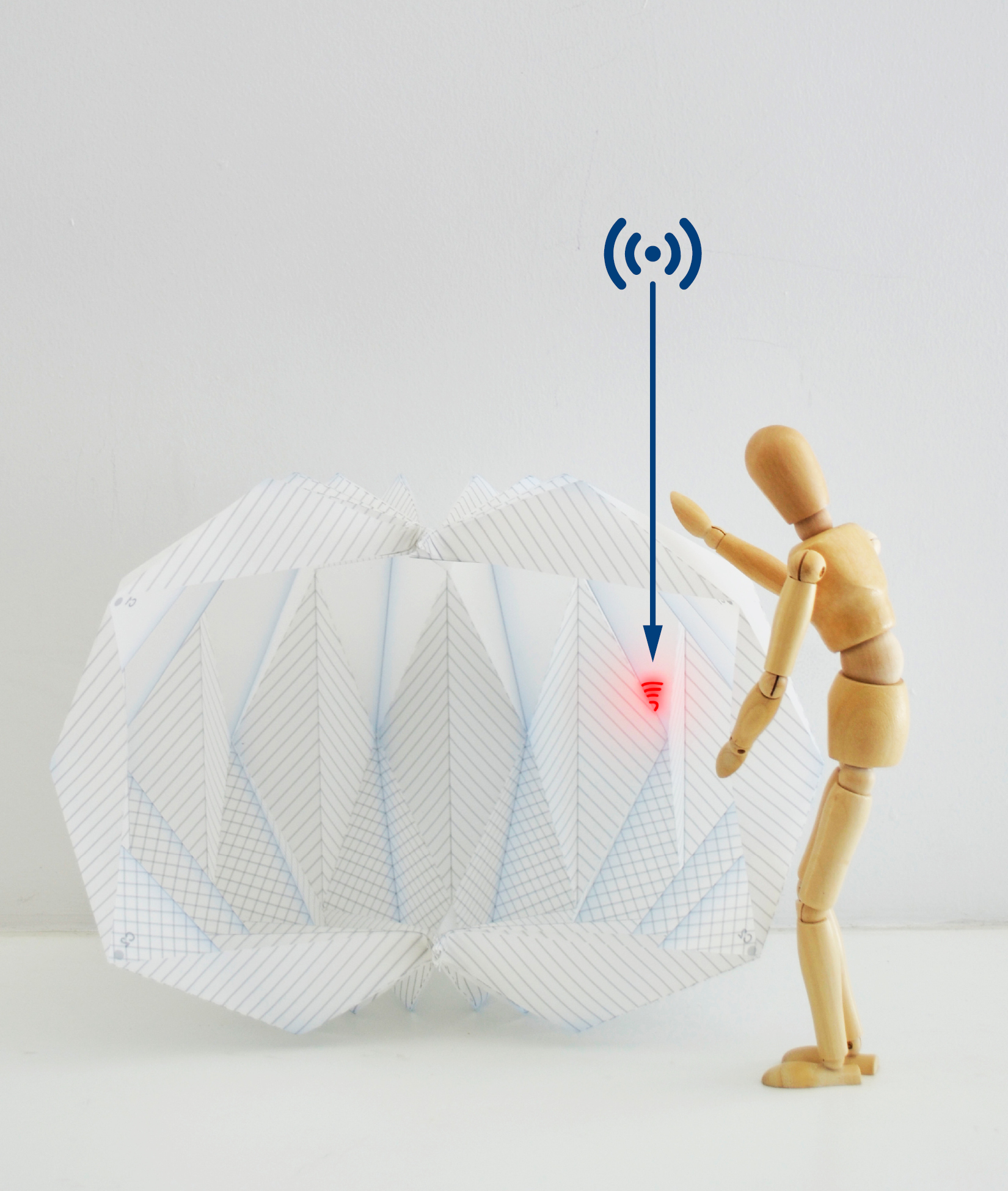

Stage 4 Expand horizontally using systems of accrodian folds
Stage 5 Once deployed SECUR.BIANCE can be used as a resting space or to send out a distress signal to caregivers
Stage 6 Fully inflated the environment provides privacy for someone who needs to be removed from over stimulation. The air tubes glow red when a person is in distress or blue when calm


Stage 7 SECUR.BIANCE can deflate its air tubes to provide different levels of privacy. Here the tubes turn from red to blue as the user calms down and is no longer in distress
Stage 8
Used in a sitting position SECUR.BIANCE allows and elderly person to rest and be protected
Proactive Panels
Project by Kelsey Habla & Alex Sheehan
Project by Kelsey Habla & Alex Sheehan
Proactive Panels uses analog and digital technologies in tandem to create a multi-surface environment for older adults who have difficulties with balance and mobility. Floor and ramp panels, sized to accommodate a human foot, sense and adjust to the gait and ambulatory necessities of those interacting with the surface. Applications of this system include preventing falls, facilitating forward movement, and encouraging physical mobility. Larger wall panels also act both as a means for physical interaction and play, as well as for ventilation and views to the exterior.
Individual residential units within a larger rehabilitation complex for older adults would benefit from these panels by monitoring and providing support for otherwise independent individuals. Long term residence in one of these units could facilitate muscle growth, confidence, and a sense of community.
Individual residential units within a larger rehabilitation complex for older adults would benefit from these panels by monitoring and providing support for otherwise independent individuals. Long term residence in one of these units could facilitate muscle growth, confidence, and a sense of community.
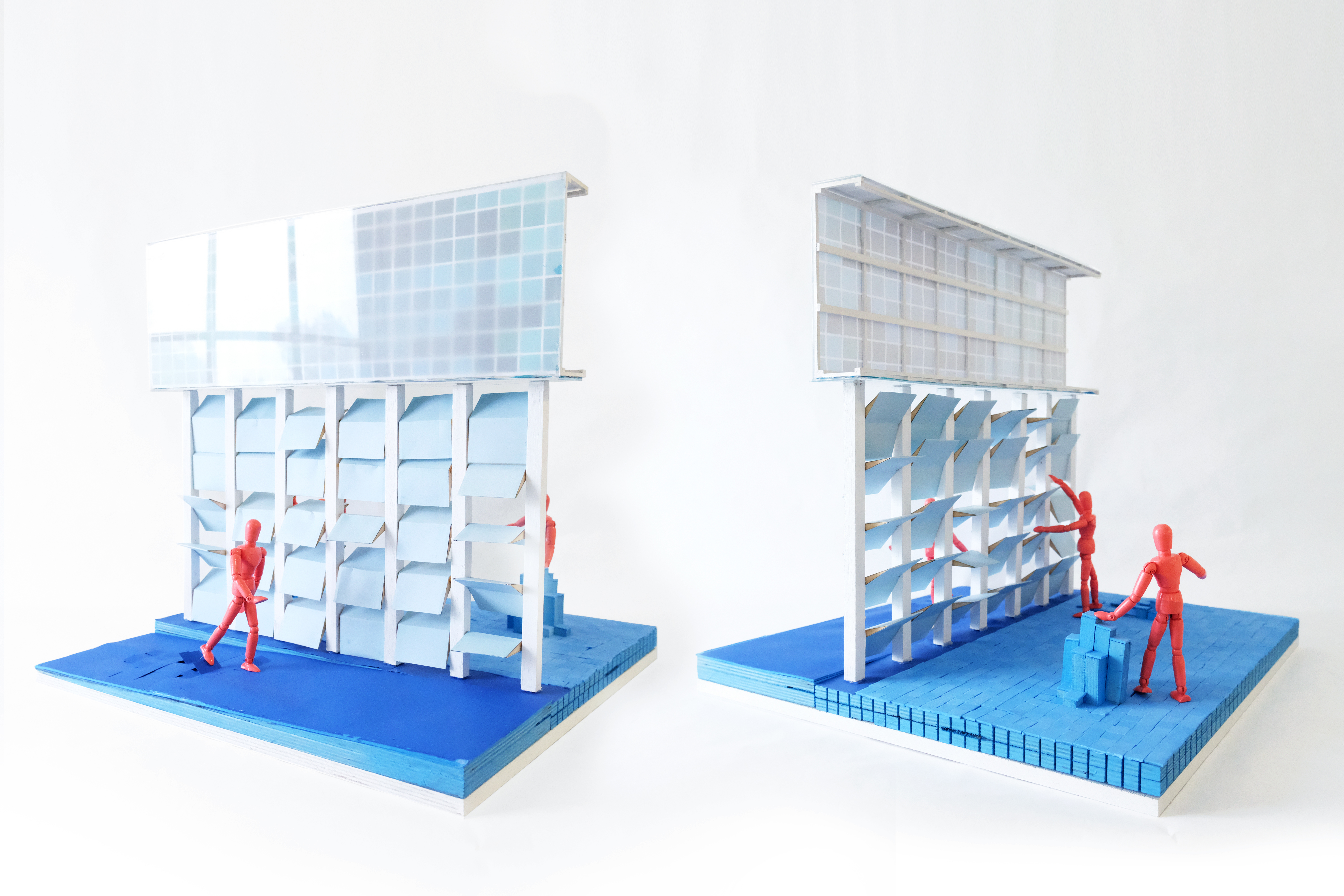
 Section 01
Section 01
Section 02
 Reponsive Floor Detail
Reponsive Floor Detail Interactive Wall Panel Detail
Interactive Wall Panel Detail
Mobile Suburban Framework
Project by Euychan Jeong & Amrutha Boban
Project by Euychan Jeong & Amrutha Boban
The Mobile Suburb Framework provides a comfortable and interactive community settlement for older adults within a suburban context. When living independently within their own home becomes impossible because of physical or medical barriers, older adults can attach a mobile living pod to their single-family house.
Within the living pods are all the necessary physical and biomedical support enabling senior citizens to age-in-place. The large mobile legs allow the living pod to navigate between floors overcoming the physical barrier produced by the stairs. In addition, the mobile prosthetic living pods free seniors from financial obligations as well as encourages socialization and cultural engagement which can have a profound positive impact on personal health.
Furthermore the pods eliminate the need to relocate as they grow older and allow younger generations of the family to co-habitate within the primary residence. This allows for enhanced multi-generational interaction within the community which is commonly lacking in current models for senior living.
Within the living pods are all the necessary physical and biomedical support enabling senior citizens to age-in-place. The large mobile legs allow the living pod to navigate between floors overcoming the physical barrier produced by the stairs. In addition, the mobile prosthetic living pods free seniors from financial obligations as well as encourages socialization and cultural engagement which can have a profound positive impact on personal health.
Furthermore the pods eliminate the need to relocate as they grow older and allow younger generations of the family to co-habitate within the primary residence. This allows for enhanced multi-generational interaction within the community which is commonly lacking in current models for senior living.
